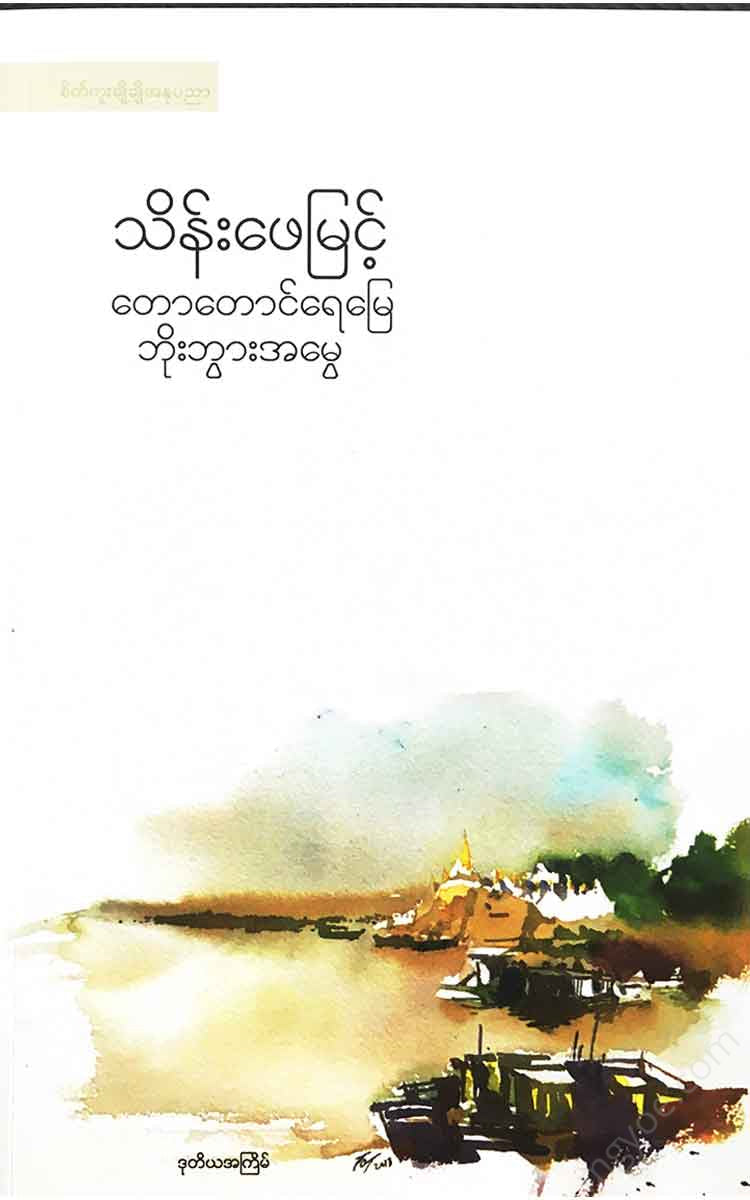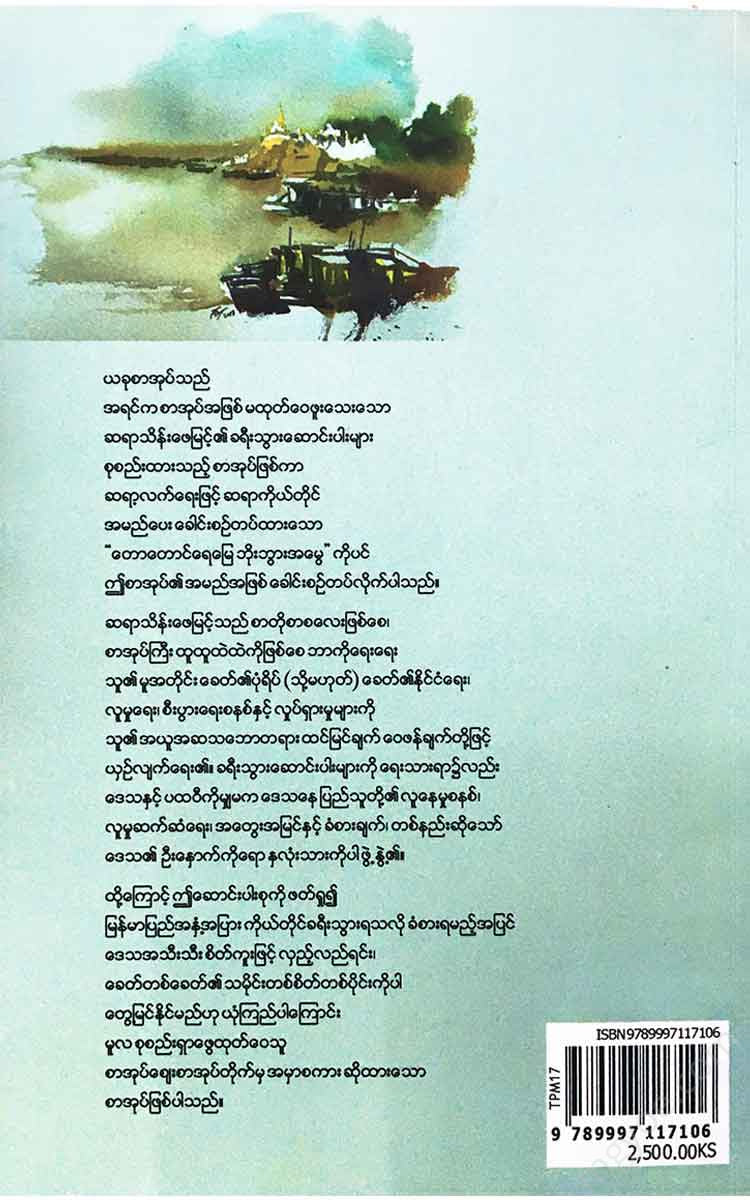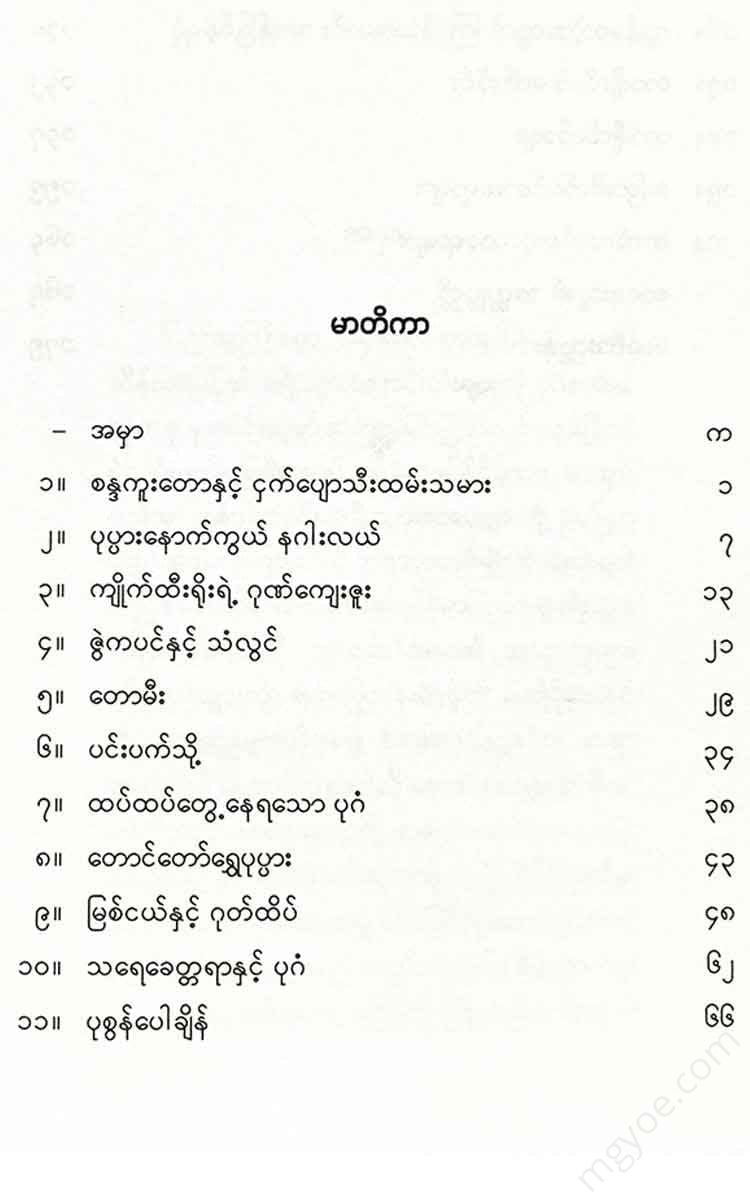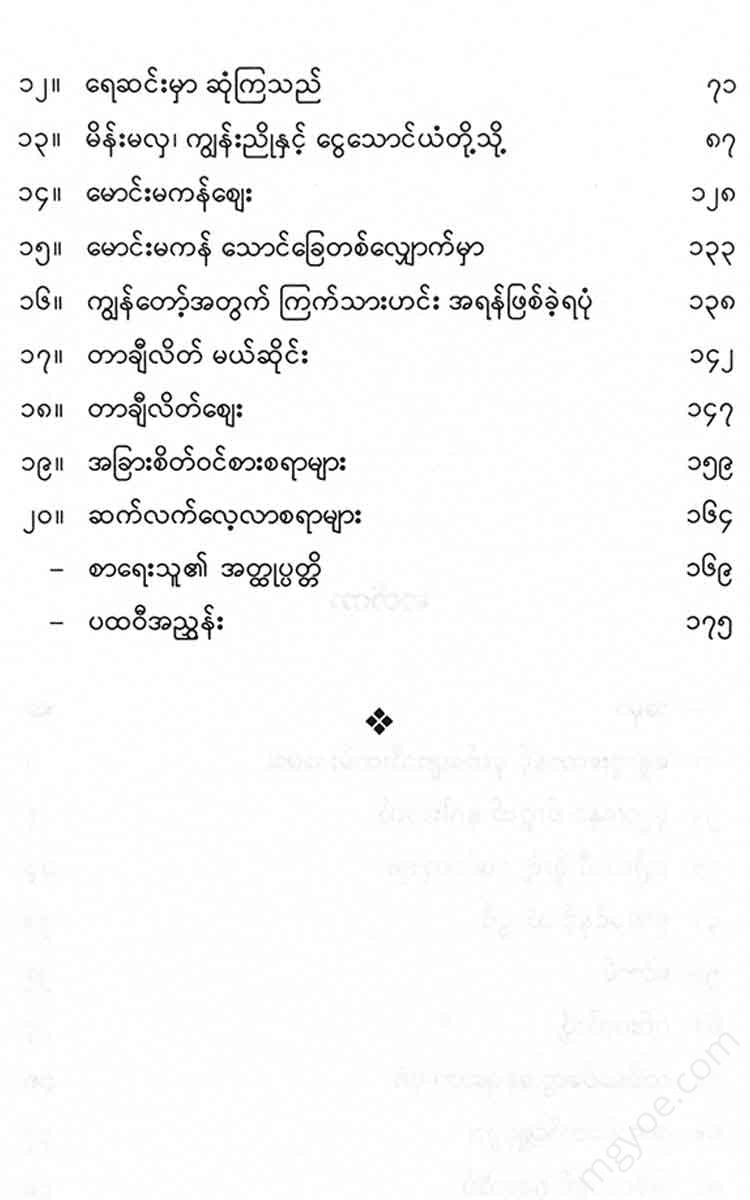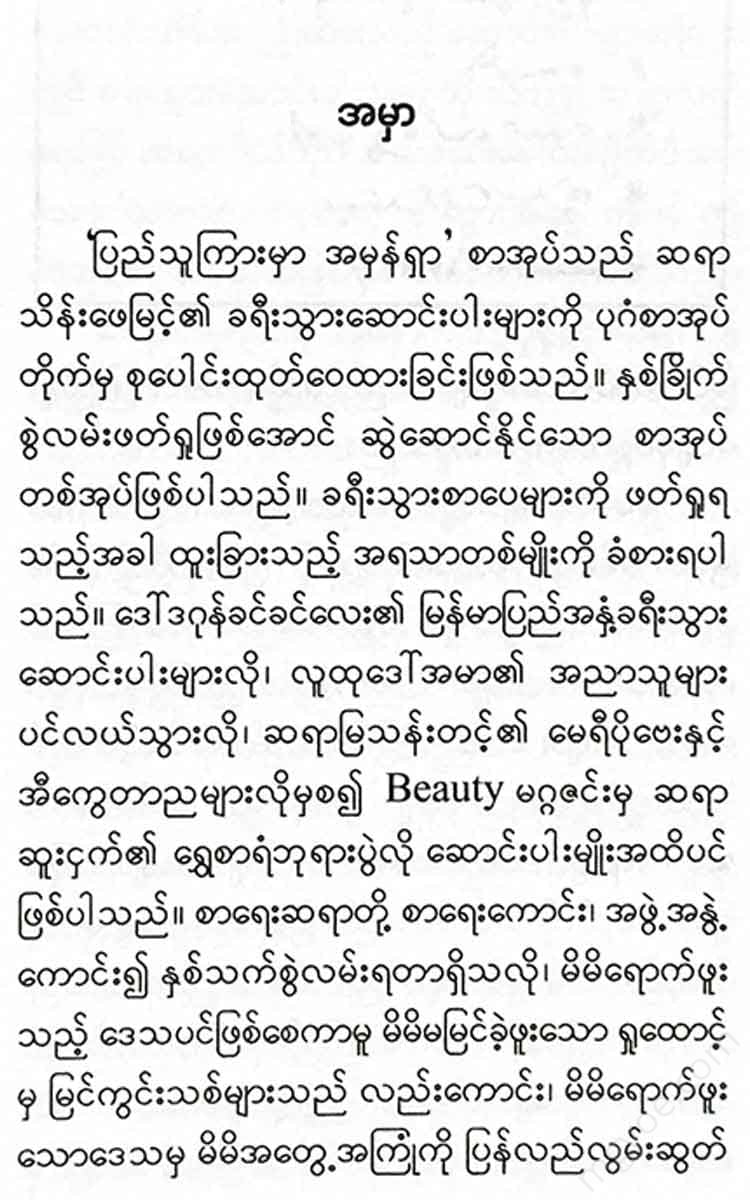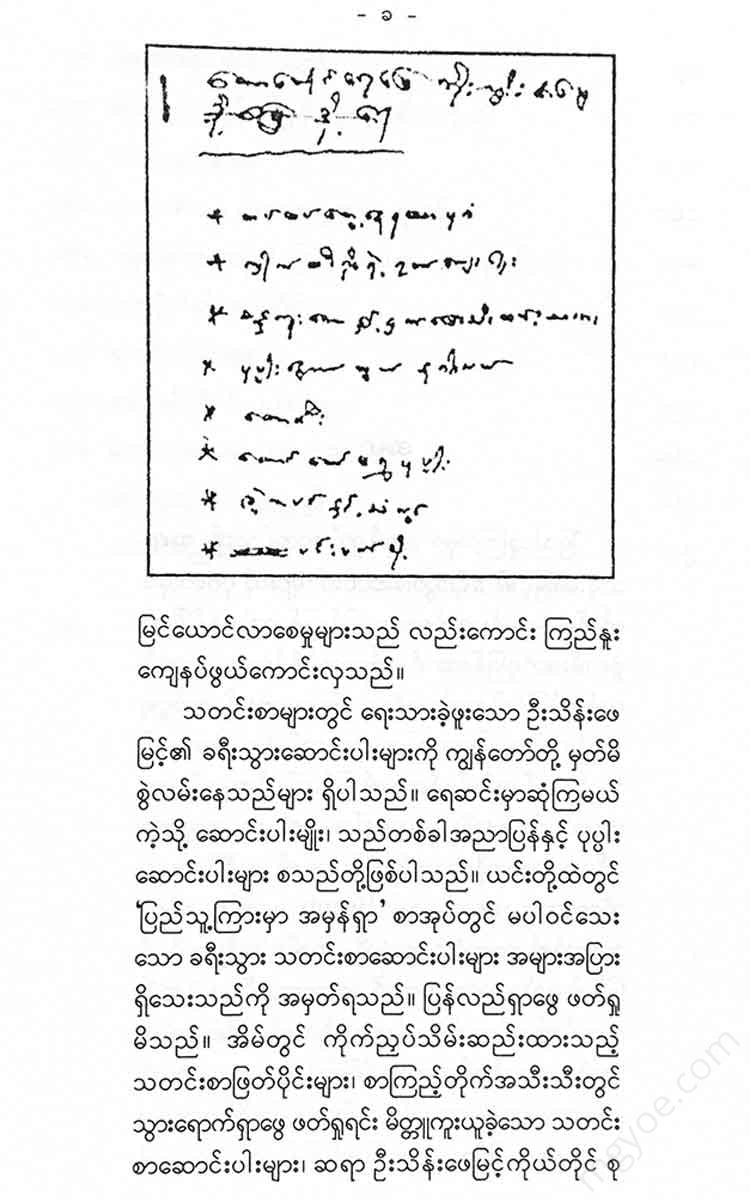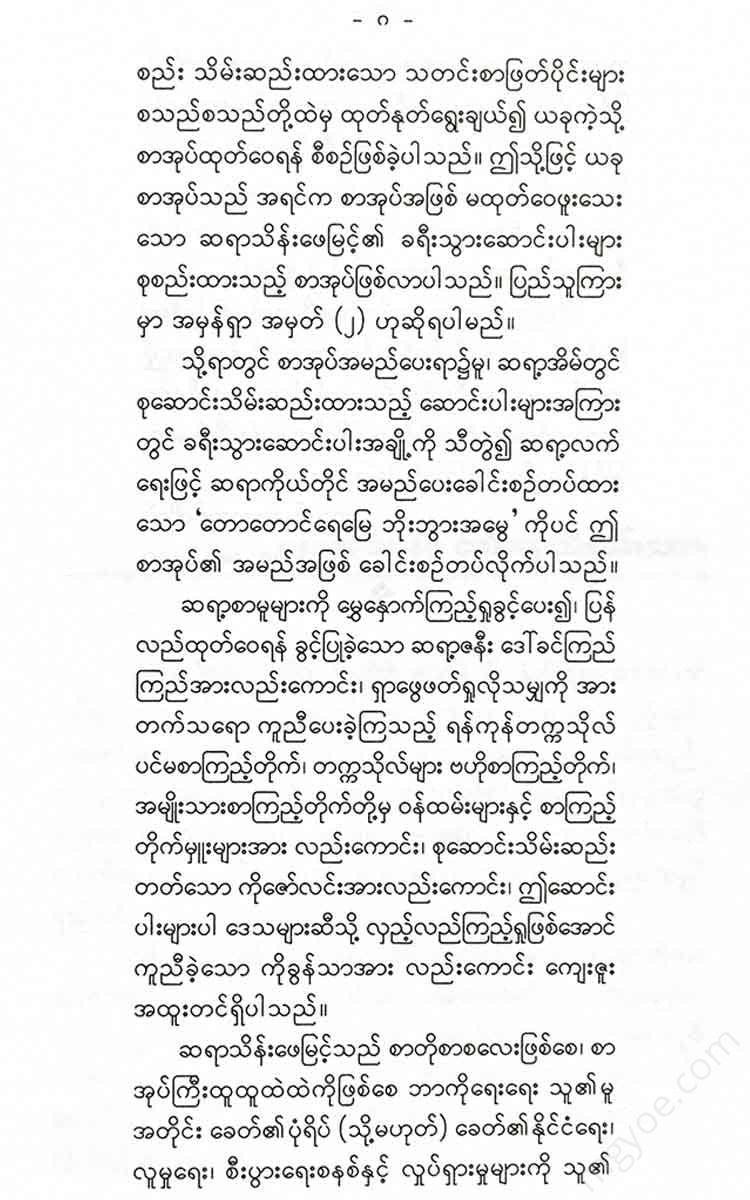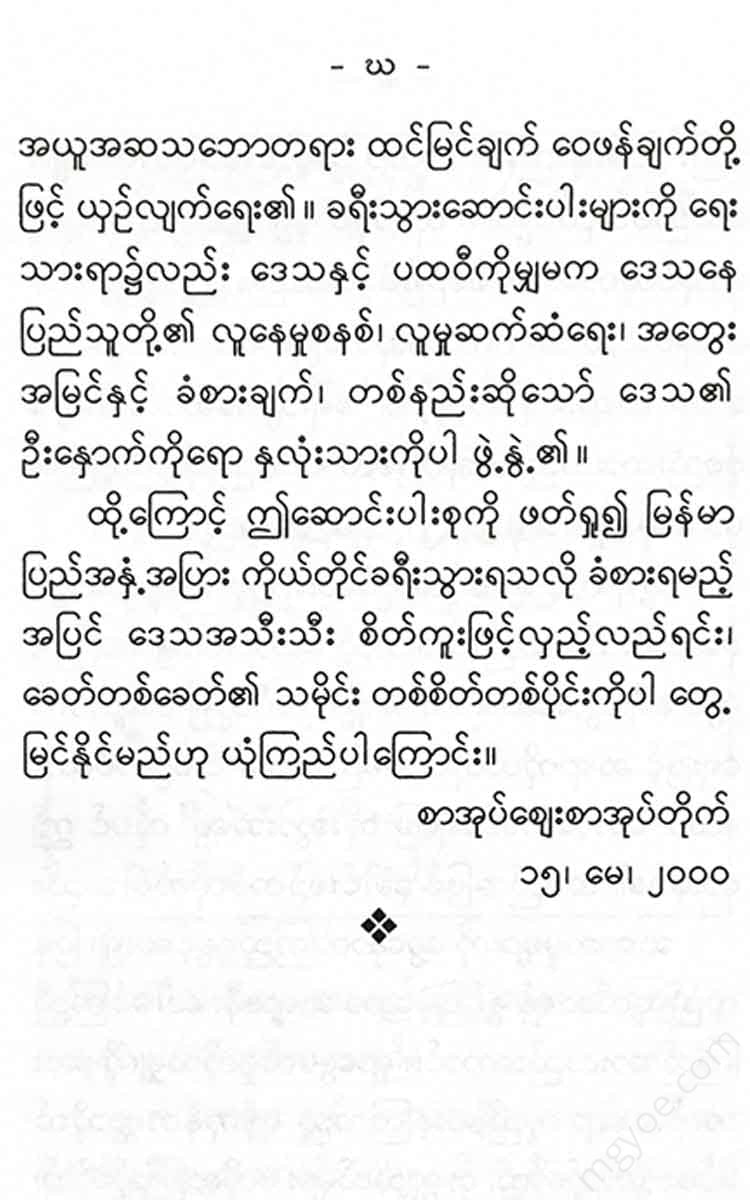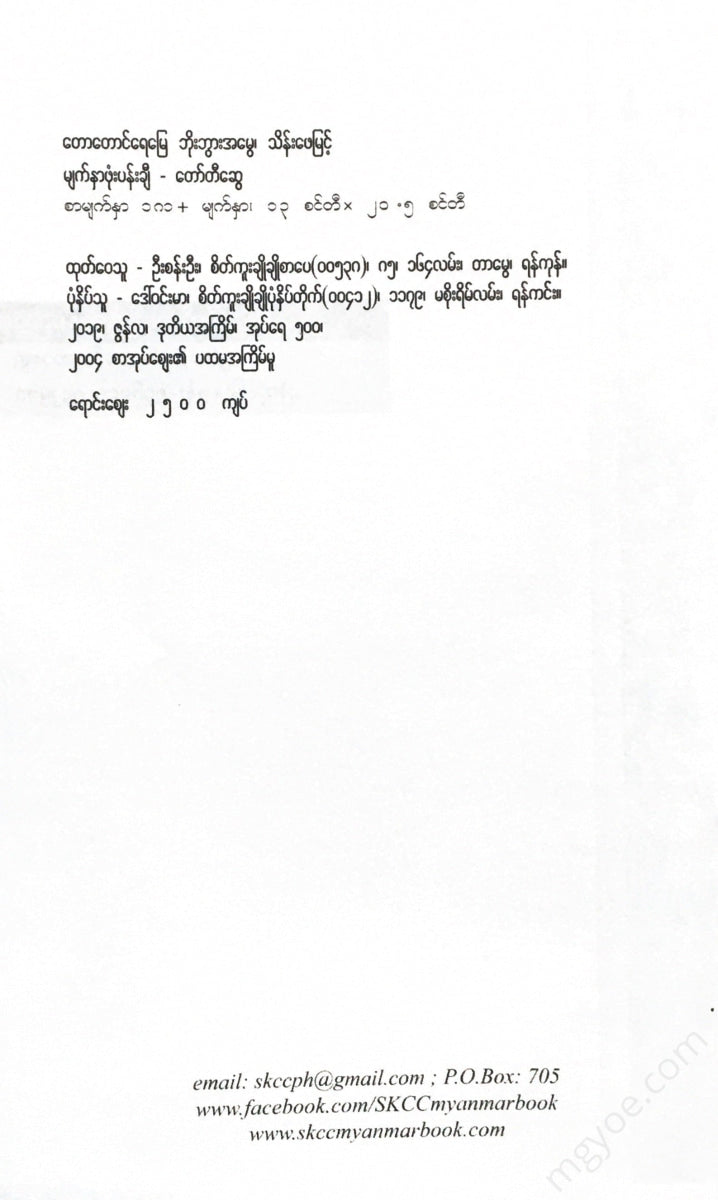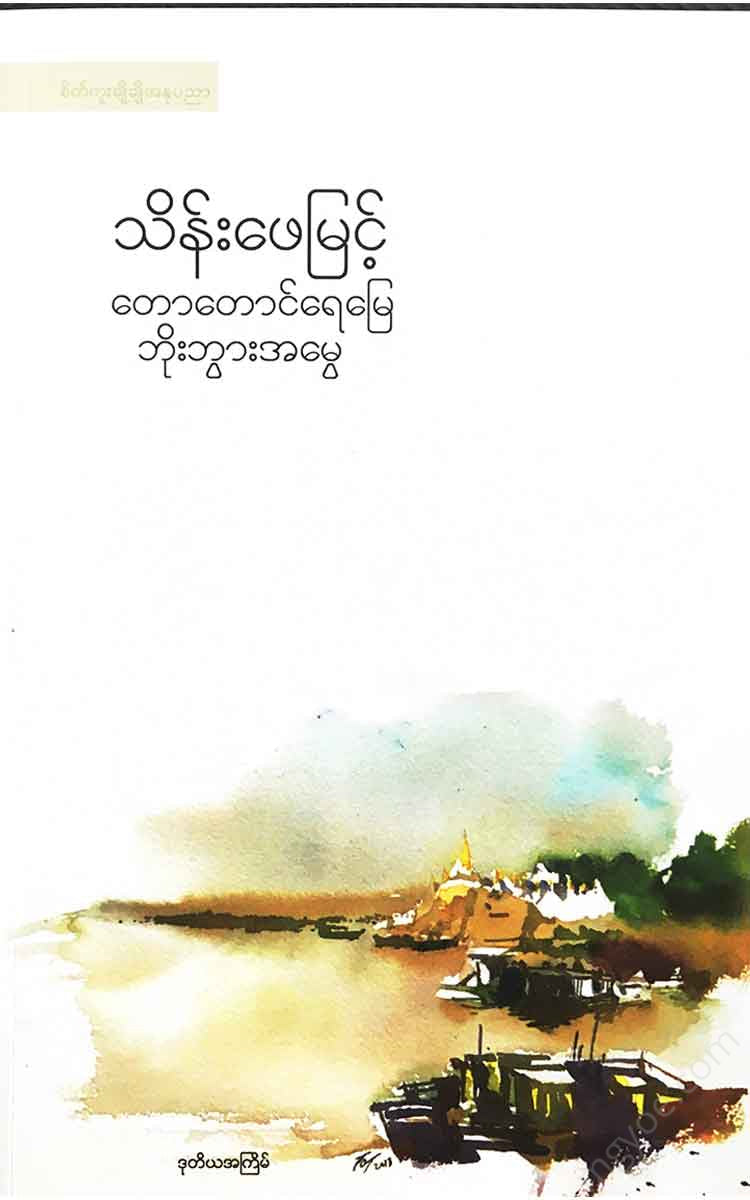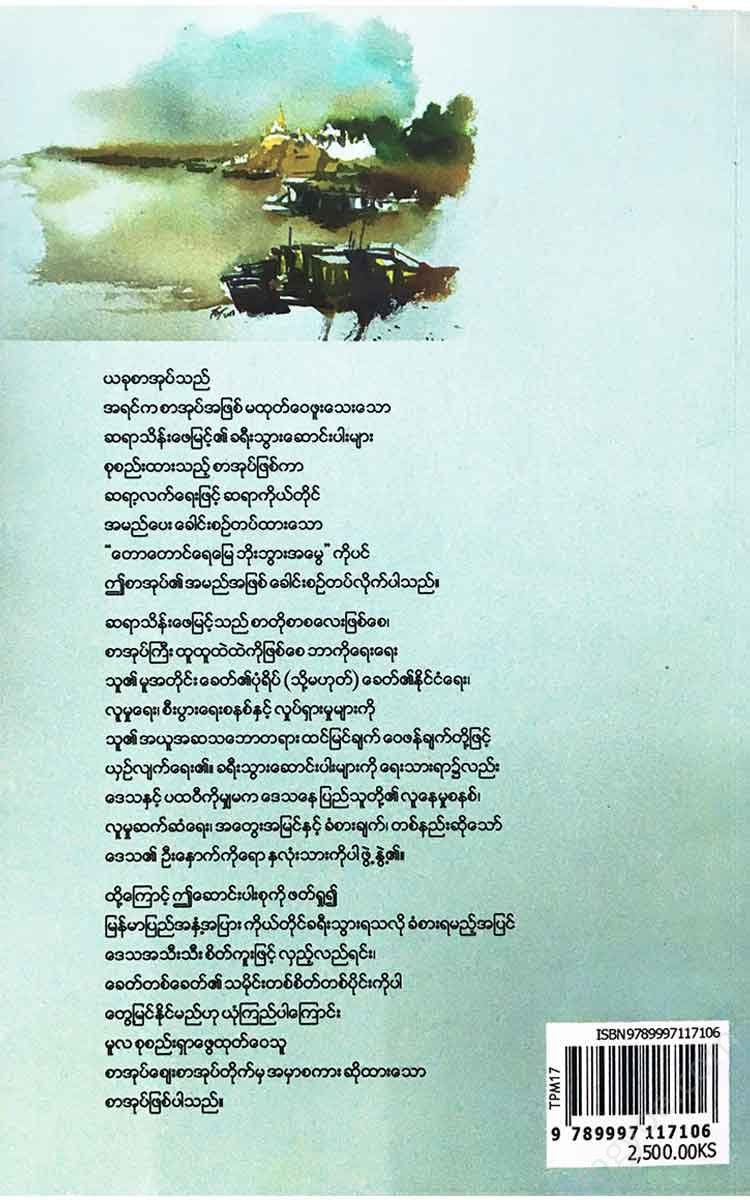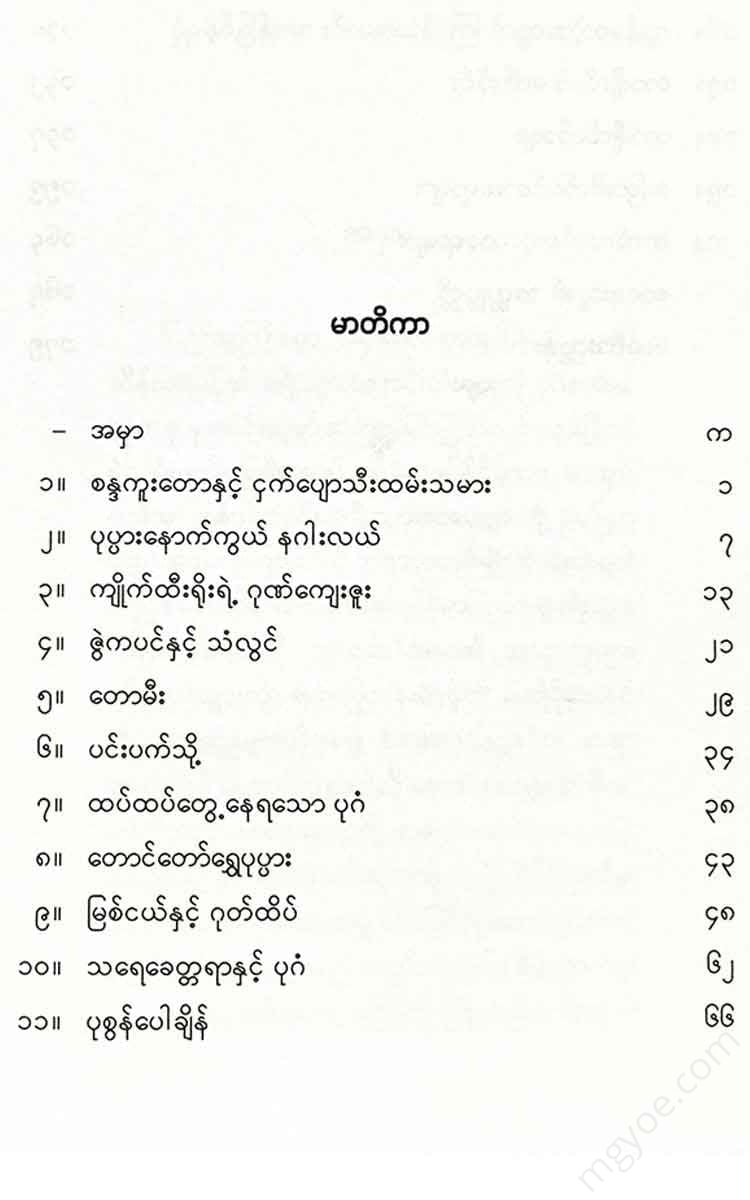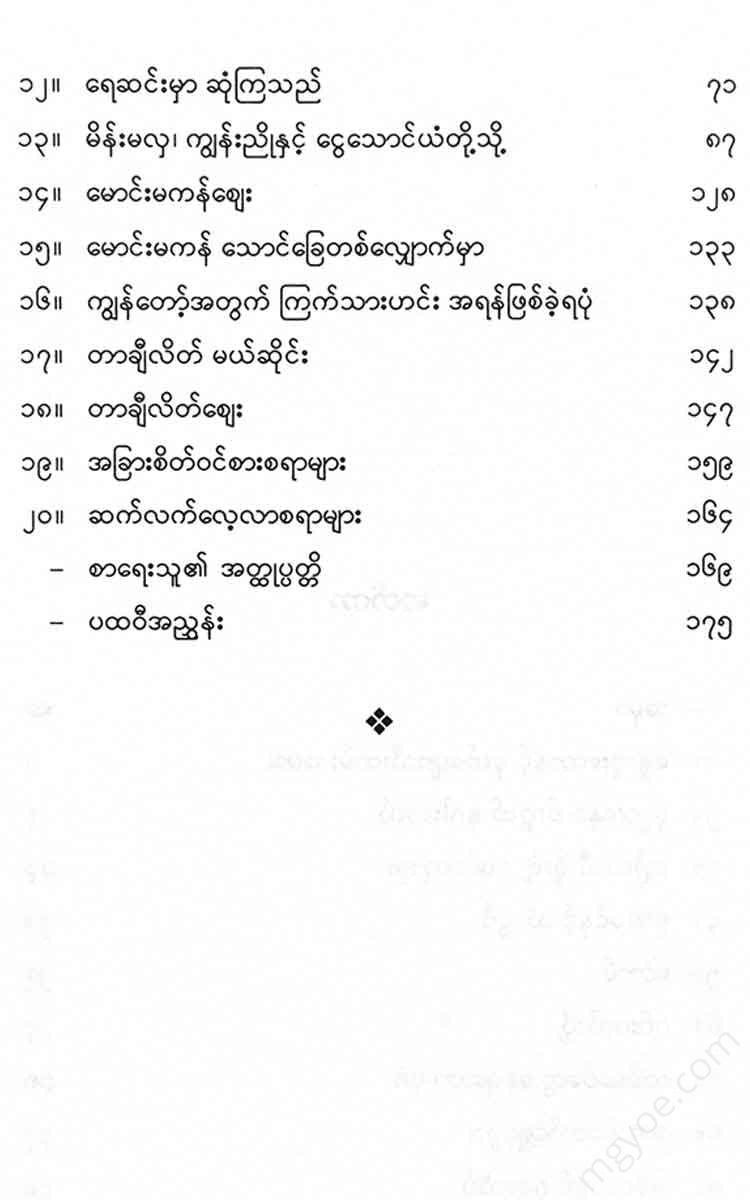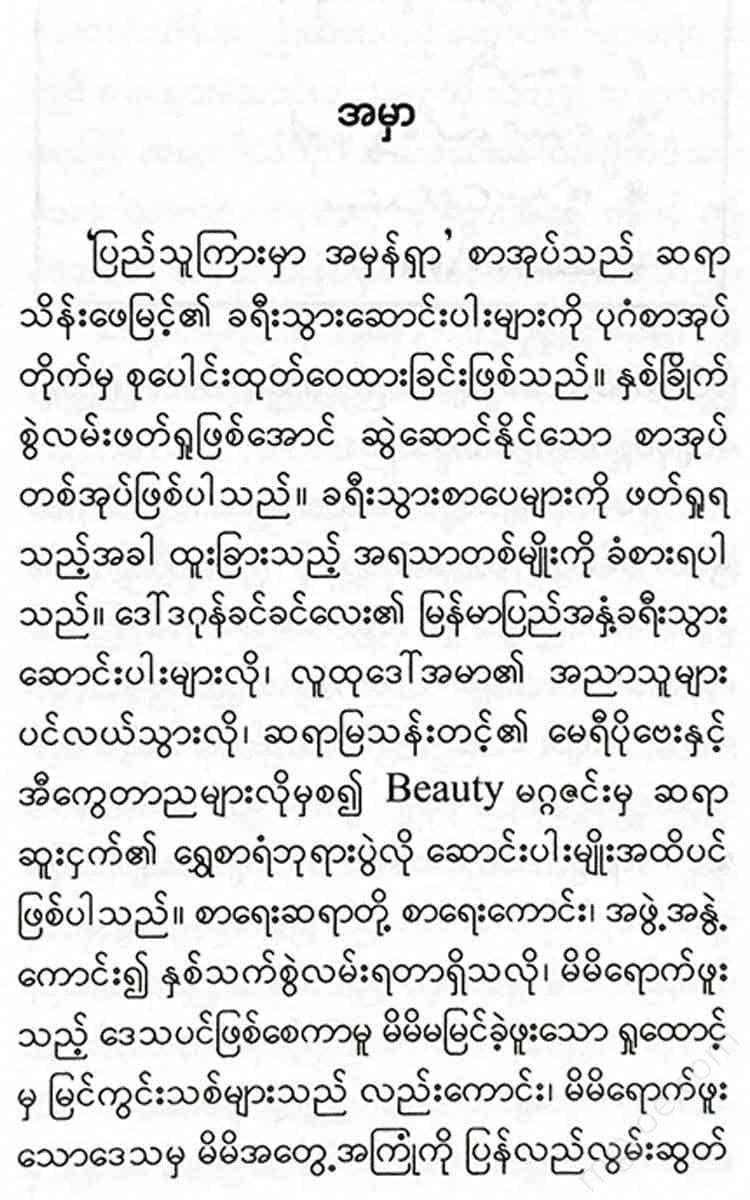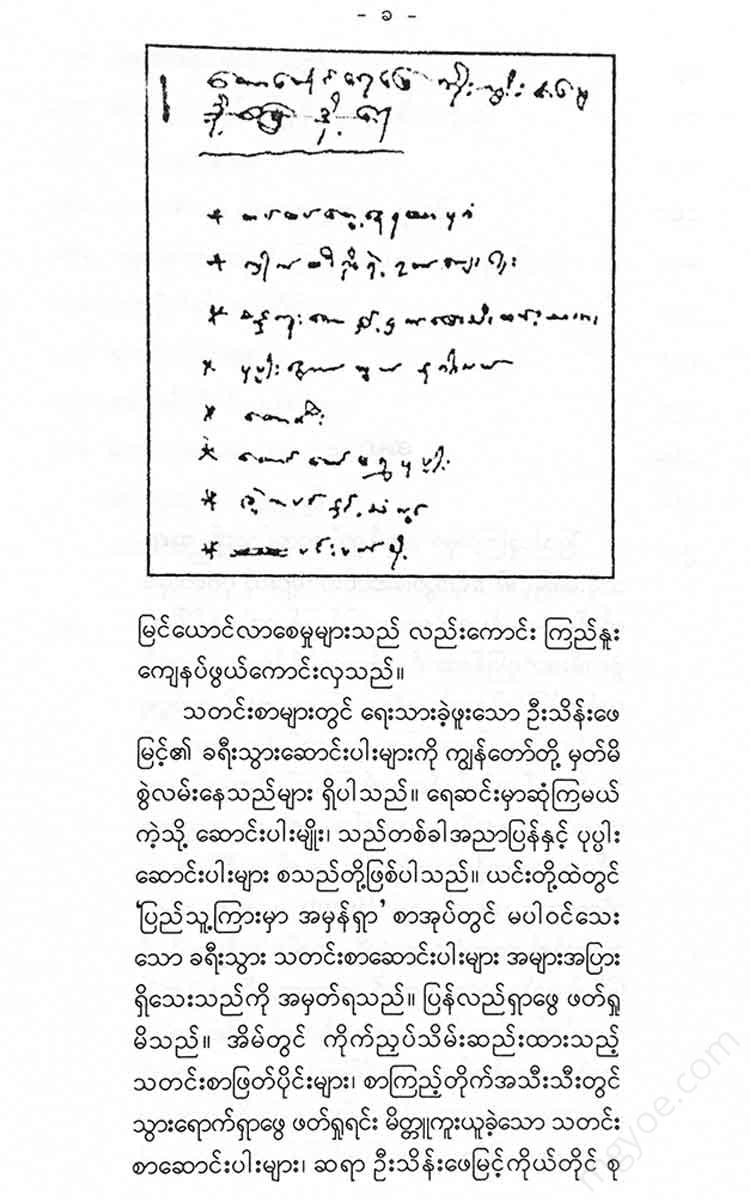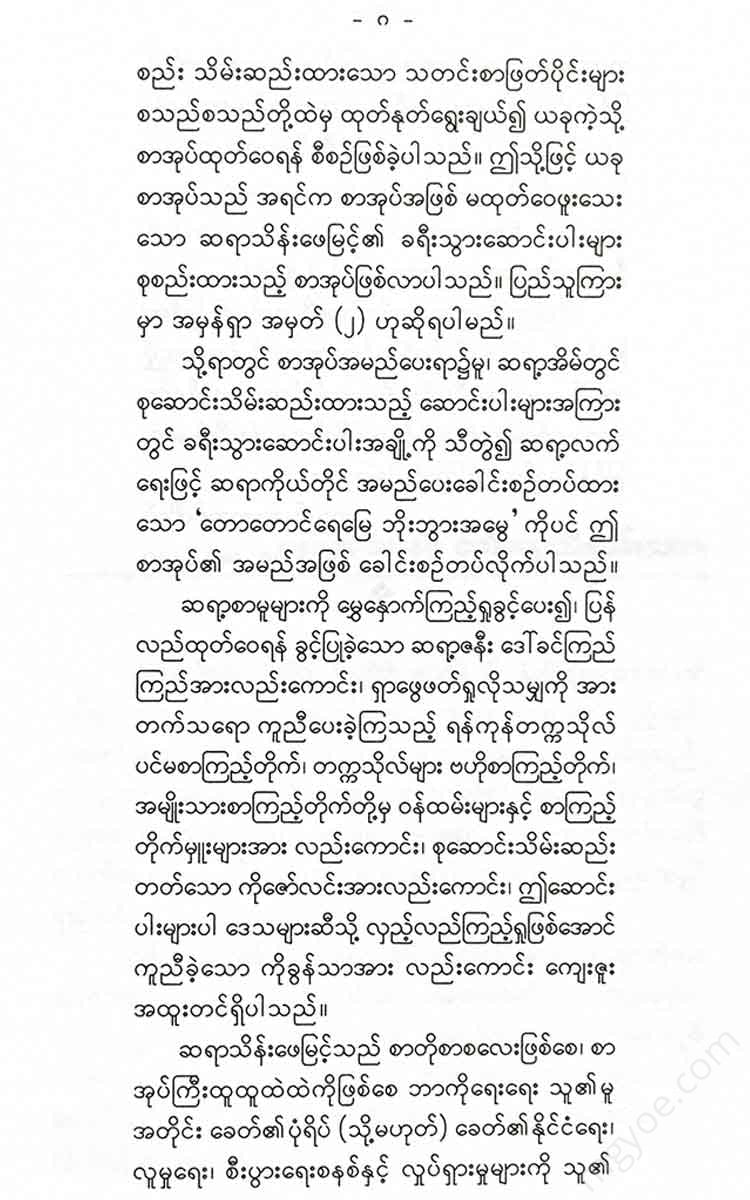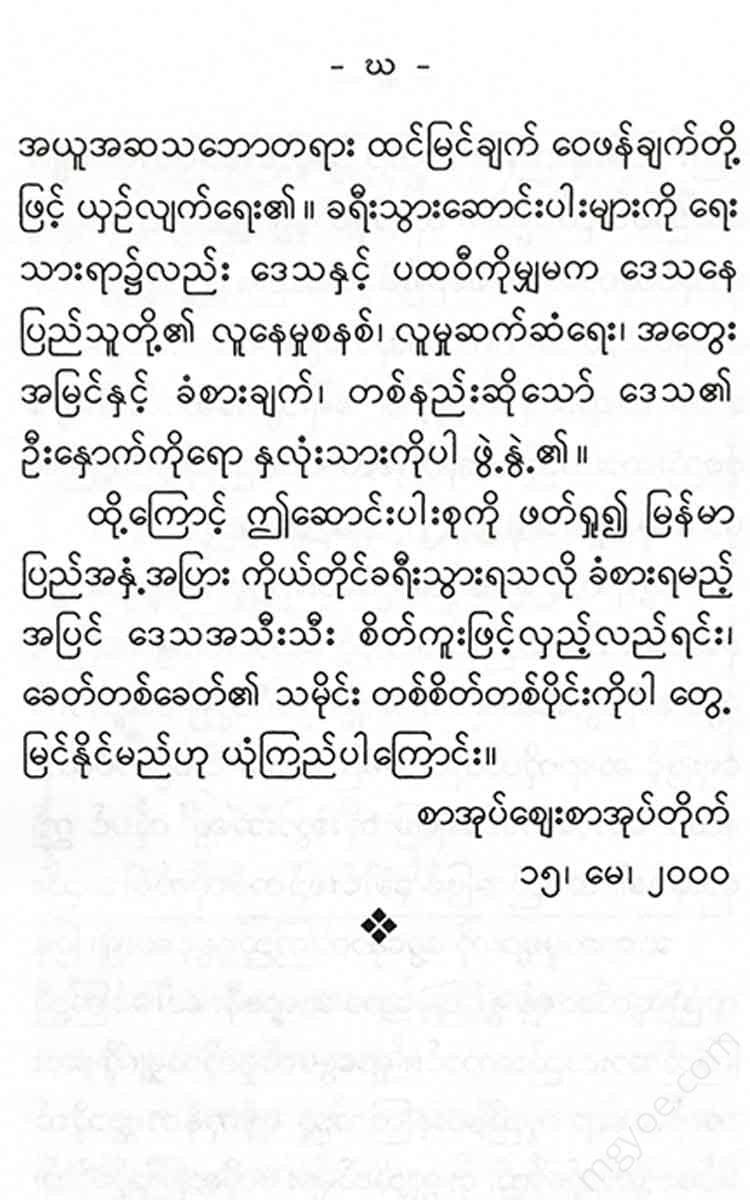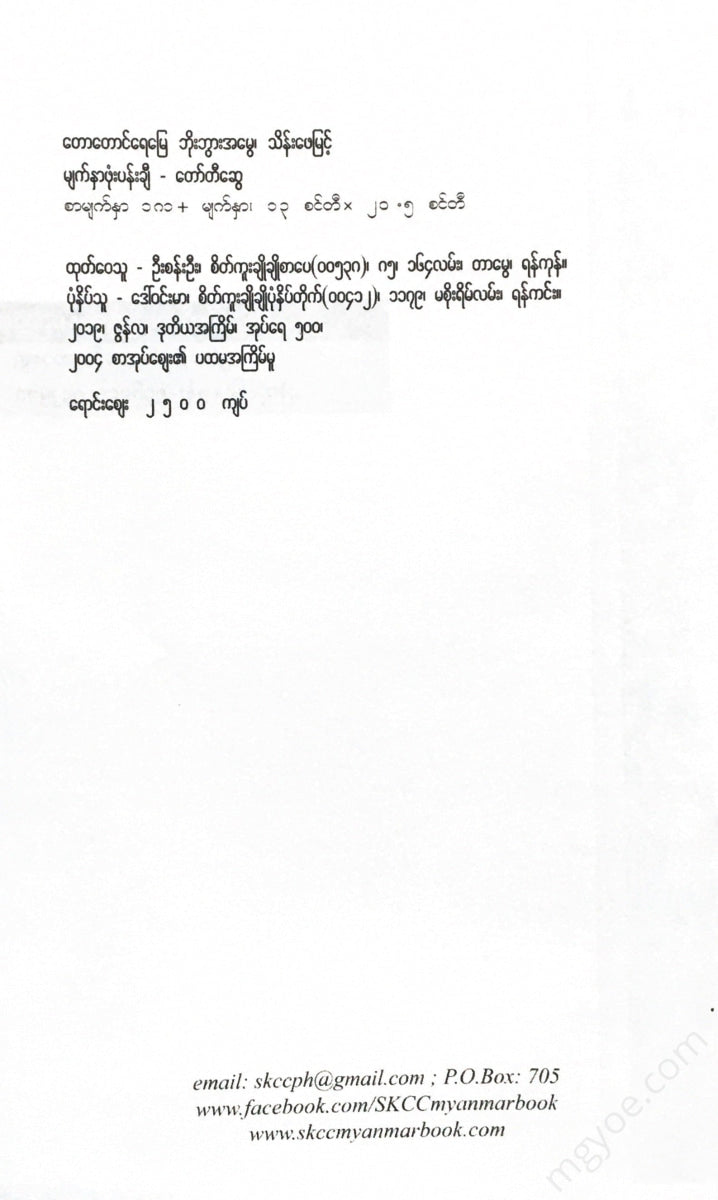စိတ်ကူးချိုချိုစာပေ
Thein Pe Myint - Ancestral Heritage of Forests, Mountains, Waters and Land
Thein Pe Myint - Ancestral Heritage of Forests, Mountains, Waters and Land
Couldn't load pickup availability
Sandalwood forest and banana bearer
If I were an artist, I would paint the town of Popa, with people carrying bananas down from the mountain. Every time I go to Popa, I see banana bearers. I first saw them when I went there with the monk nearly 30 years ago. I saw them again in the past. This is the last time, too.
I am not a painter but a field writer, so I wanted to learn about the life of a banana harvester. On my first day in Poppa, I was assigned to work in the orchard, planting grapes and doing other tasks. I got into a conversation with a worker and he asked me to go banana harvest the next day.
There are many things to see and do when you climb Mount Popa. There are coffee plantations. There are reforestation projects. There is a large plantation where sandalwood trees are being planted. There are also the pagodas of U Khanti, U Nu and U Kyaw Nyein. I especially want to see the sandalwood forest. Isn’t sandalwood a sacred tree in Burmese tradition?
So on the second day, I planned to climb the mountain, see the sandalwood forest, and then carry bananas down. But in reality, it was more than that.
First, we climbed to the highest peak of Poppa, which is 4,985 feet high. It was four miles and two furlongs from the Myay Kye Shin Garden. We left the sandalwood forest and the banana plantation to return. Before reaching the peak, we reached U Nu Yeik Thar, which is 4,400 feet high. I told Darwan.
“Some people in Yangon are saying that U Nu has gone to the cemetery and Poppa has arrived.”
Dravan -
"Some people who come here ask, 'Why are you thinking that the doors of your home are closed?' It's like everyone is acting like you're showing off. They're always thinking positively."
To the north of U Nu Yeik Thar is a building with six guest rooms. Both in U Nu Yeik Thar and in that building, the furniture is still shiny and painted. The floors are also shiny.
During U Nu's 49-day meditation, there was a telephone line from the foot of the mountain to the top of the mountain. Now those lines are free. The buildings are also free.
I asked Dravana.
“I know what U Nu Yeik Thar was built for. What are the six guest rooms and the building over there going to do?”
“I think they should hold a meeting with foreign experts. For the sake of a prosperous and prosperous country in a drought-stricken region.”
I -
“U Nu prays to the pagoda, consults with the spirits, holds meetings with foreigners, and then draws up plans to save the country. There is only one thing he does not do. He does not consult with the people who will actually do the work.”
I think it would be a good idea to use the buildings that are now unused to house the Meteorological Department and the Department of Meteorology. In fact, it is difficult to determine which department owns these buildings. After the fall of U Nu, there was a dispute between the departments over how to pay for these buildings.
After seeing U Nu Yeik Thar, we went up to U Khanti Pagoda. Then we went up to U Nu Pagoda, which is higher than him. The highest pagoda we climbed was U Kyaw Nyein’s Pagoda. I don’t know if they split up while competing for the height of the pagoda, or if U Kyaw Nyein took the initiative and built the higher one. However, what is unique is that U Kyaw Nyein’s Pagoda is built on a perfectly leveled stone pedestal. Successive governments have built a perfectly leveled stone pedestal at the highest point. From that pedestal, the terrain can be accurately measured. That is why the mountain is called the Mount of Mirrors. After all the pagodas were built, the relevant government department had to build another stone pedestal to the north of U Kyaw Nyein’s Pagoda. U Kyaw Nyein did not dare to sue or seek compensation.
I was standing on U Kyaw Nyein Pagoda and looked in all directions. The Meik Thila side was covered with clouds, so I couldn’t see anything. I could see the Ayeyarwady River and the western ridge. I could see the mountains of Bagan, Nyaung U, and the Kyauk Pandaung. The famous Poppa Taung Club was just a small rock towering like a castle at the foot of the mountain. In front of me was the crater of a volcano. Now it was a large crater covered in dense forest. But the crater was still to the north. Many years ago, it was a stream where lava flowed.
After we got off at U Nu Yeik Thar, we took a shortcut to the government coffee shop. The wind was blowing hard. The wind was always blowing now. The clouds were moving, swaying the trees and us. There was no rain. But the roads were wet. I slipped twice. The ground was so hard that my hips hurt. As the shortcut said, it was very steep. I had to use one hand to support myself with a bamboo stick, and the other hand to pull myself down with grass, vines, branches, etc. It was not easy to descend more than a thousand feet like this.
The coffee plantation is doing well. The landowner planted the coffee in the forest owned by the Forest Department, so there are bumps. The landowner wants to clear the coffee to make it better. The Forest Department does not allow it. The important thing for the Forest Department is to prevent the soil from eroding and to grow more trees in the Poppa Mountains.
The reforestation of Poppa Mountain has been quite successful. Just by banning trees below 3,000 feet, new forests have been created in four to five years. The trees planted between 3,000 and 4,000 feet have grown. But above 4,000 feet, new trees have not been able to grow. But they are not dying.
There are banana trees in the coffee plantation. I cut two banana trees, each about six feet long, to carry. Carrying the bananas on a yoke is not very heavy. However, since I am not good at carrying them, the bananas shake every time I want to. The slope is steep and I am afraid that I will fall. So my companion, Ko Nge, took pity on me and forced me to carry them. When we reached the village of Bo Te, where we were staying, two miles away, I carried them. The two banana trees were only as heavy as the children in the village could carry. The adults carried two or three times as much. However, I was tired of reading. The wind was howling and the clouds were passing by, so in the cold weather, I was sweating profusely. The sweat was still in my eyes, so I had to wipe it off with a towel every now and then. It was also tiring to keep the shaking banana tree still.
I felt a great sense of relief when I arrived at the sandalwood forest. It wasn't because I had to smell the sandalwood. It was because I had the chance to stop and look at the sandalwood trees, which were only a few individuals. Even if I broke the tree and smelled it, I wouldn't be able to smell it. But I was grateful for the sandalwood forest. If I hadn't stopped and looked at the sandalwood forest, I would have been exhausted and would have continued on without stopping.
After carrying the banana for exactly one mile from the sandalwood forest, the banana carrier arrived near the Myeiksin orchard. The girl and the boy who saw this banana carrier told my companion, Ko Nge,
“What’s wrong, little uncle, why are you asking me to carry a guest?” they asked. They knew right away that I wasn’t a real banana carrier. Was it because of the glasses and the watch? Or was it because of the swaying bananas? I couldn’t tell.
I calculated my salary. It couldn't have been more than 40 paise. But I gained an invaluable experience. The life experience and compassion of a banana carrier, who is eternally grateful to the sandalwood forest.
Botahtaung Newspaper, 30, August, 1963
